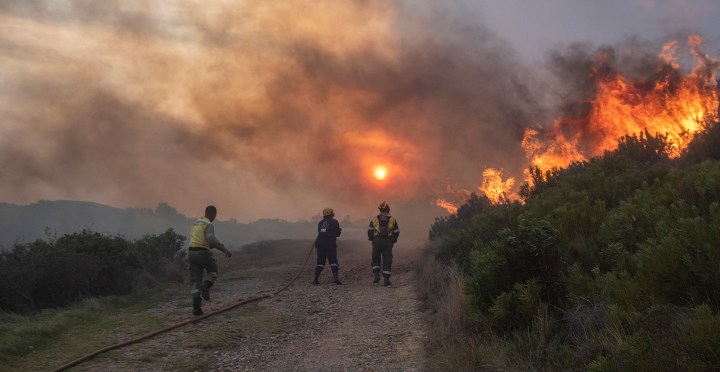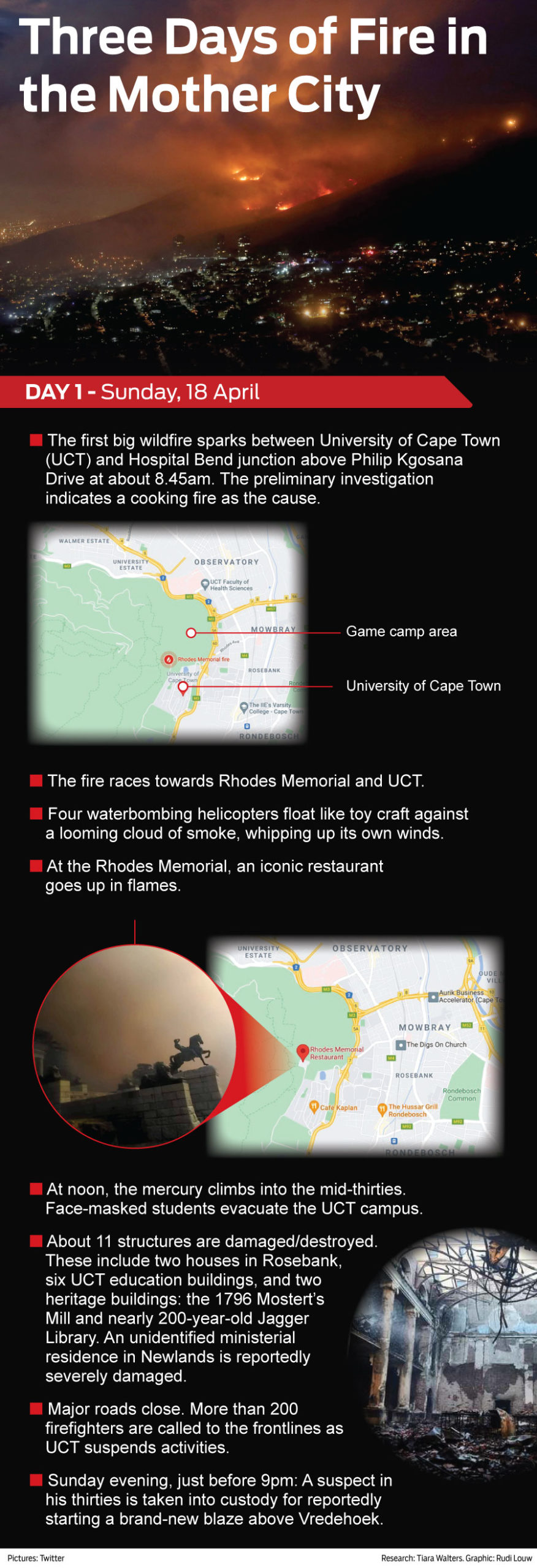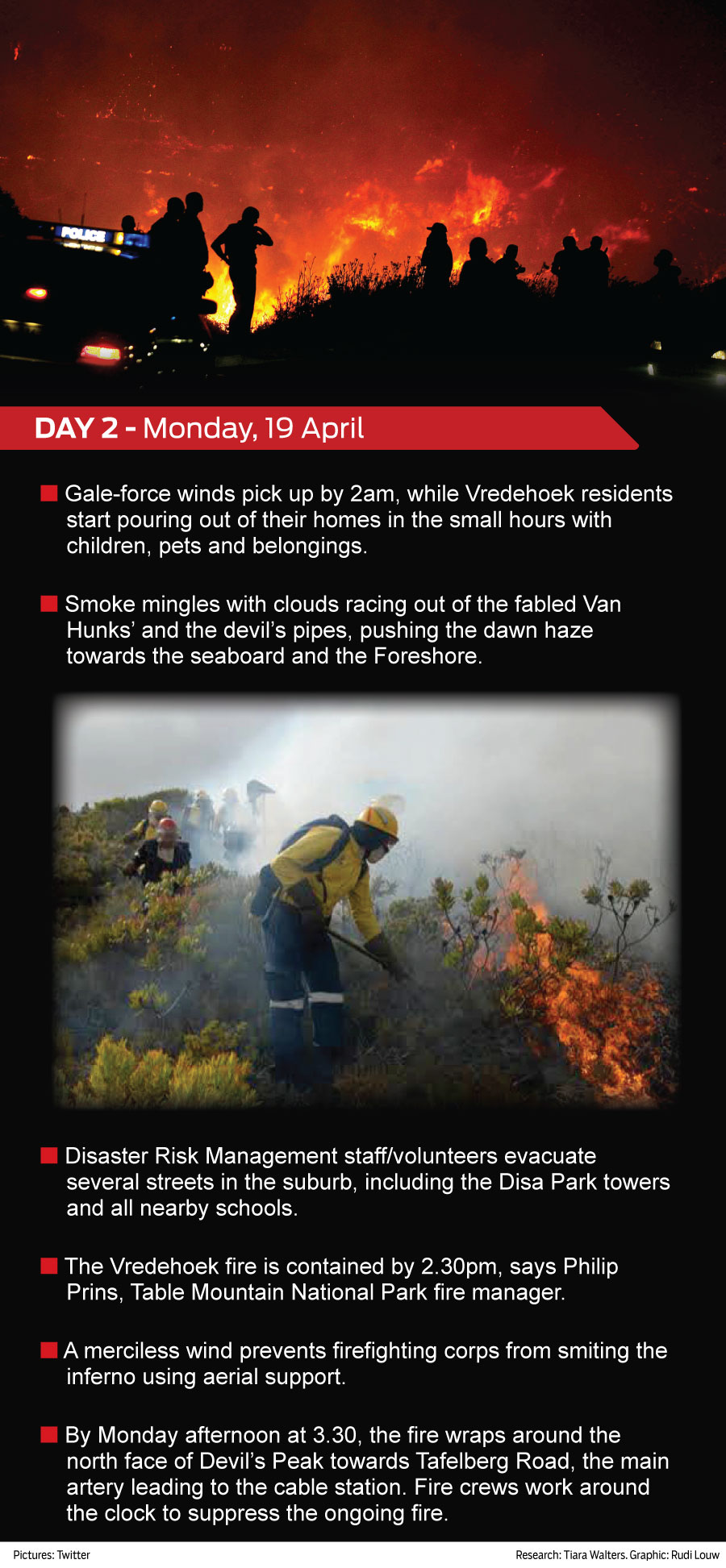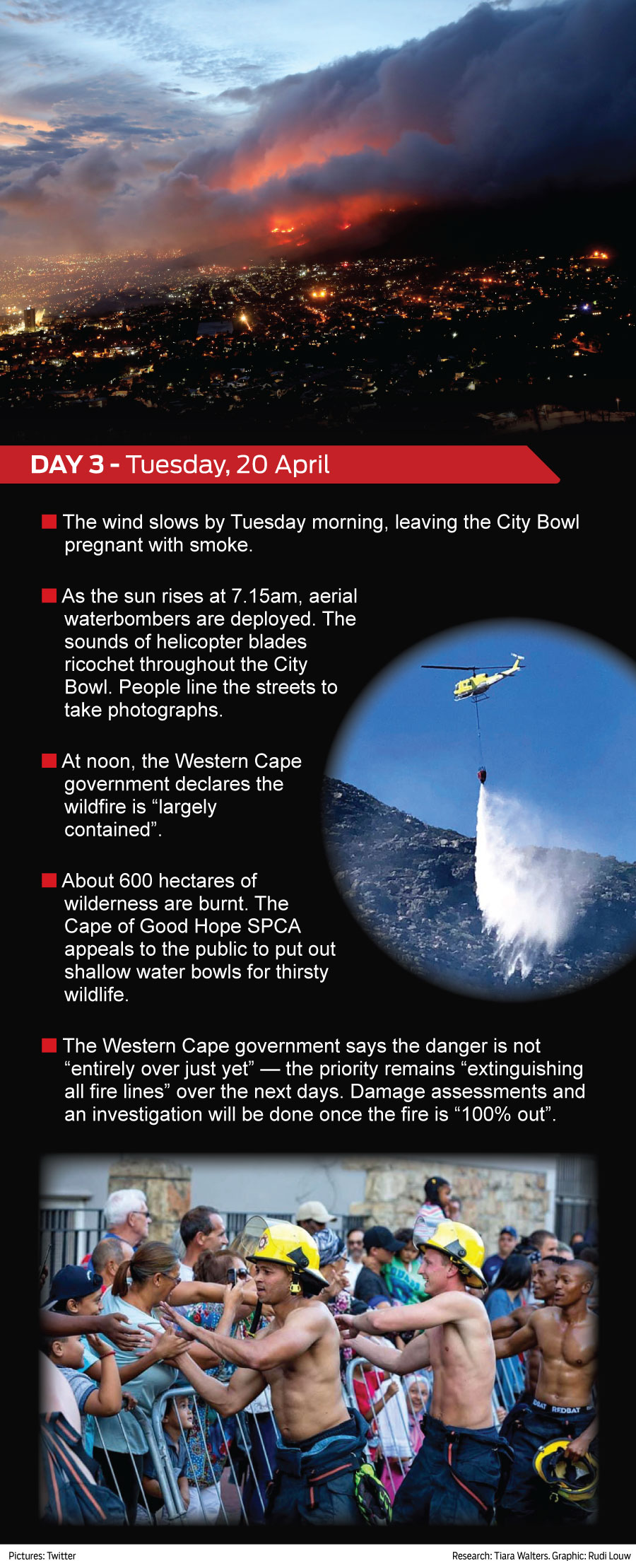PYROCENE CAPE
Our Burning Mountain: The unearthly anatomy of a humanitarian emergency

Natural fires are older than the Mother City itself – but three days of flames in April 2021, and counting, will be remembered for their human face. For the cultural heritage lost at South Africa’s oldest university, founded in 1829. And for the people who escaped with their lives during what should have been a day of rest.
A monstrous fire laid siege to the city of Cape Town and its mountain during a global pandemic. The southeaster unleashed its might over the city. Historical landmarks burnt. Capetonians fled their homes in face masks, vulnerable people were stripped of their belongings and students were evacuated from a sanctuary of learning at the foothills of Table Mountain.
The international community watched as the unfolding disaster echoed in world headlines and six firefighters were injured in the trenches.
And, amid the bedlam and the inferno, unimaginable devastation would have been felt by the residents who could not speak for themselves – the plants and wildlife of Table Mountain National Park, a World Heritage site.
Starting on Sunday, 18 April at 8.45am, reportedly as a result of a cooking fire, the blaze that burnt hundreds of hectares was finally contained on the afternoon of Tuesday, 20 April. A second fire, under investigation, may have been ignited by an arsonist.
“I have such deep appreciation for the efforts of the City of Cape Town under Mayor Dan Plato, Table Mountain National Park, Working on Fire and Volunteer Wildfire Services, as well as the SANDF, who were all supported by the Western Cape government,” said Premier Alan Winde on Tuesday.
Aerial resources are currently deployed and fighting the #CapeTownFire. #DidYouKnow The Huey helicopters that have been dispatched flies an approximate 4,000 hours and responds to an average of 300 fires annually@TableMountainNP @environmentza @CityofCT pic.twitter.com/Ra7G4g6H0k
— Working on Fire (@wo_fire) April 20, 2021
“I especially want to thank the hard-working men and women who are serving on the frontline, risking their lives to put a stop to the fires. Their efforts have been nothing short of heroic. I also want to thank the many NGOs, private businesses and residents in the province who have generously made donations to support our firefighters’ efforts.
“It is incredibly heart-warming to see how we have come together as a province and as a city in this time of crisis to save our mountain and heritage sites.”
Here’s how it happened:

























 Become an Insider
Become an Insider
Visually powerful but a couple of picky points on the text. The wind started in the morning as an unexpectedly strong and short-lived North-West, and shifted through West to almost gale force South-East overnight. That’s important, because so often the pattern of our major fires involves shifting winds which move them in unexpected directions and into unreachable mountain areas — from which they can regenerate for days. And the Jagger was built in the 1930s, which makes it less than 100 years old, not almost 200 — still a tragedy, but lets get the facts right.
The UCT management are grossly negligent to have allowed the Jagger Library to burn so easily. It is entirely possible to prevent valuable material from being destroyed by fire. They should resign.
The infographics are super, but I also want to nitpick, this time on the statement about plants and wildlife. While it is never pleasant to think about living creatures perishing, the fact is that fynbos needs fire to regenerate, and new beauty will rise like a phoenix from the ashes.
So, in all this, nobody questions how come the “bergie” problem is not being addressed? How can the occupation of such valuable forested area by homeless people go unchallenged? We give housing and protection to immigrants from Congo, Somalia and Nigeria (plus a bunch of others) but not our own??
Tragic. BUT – the scale of the tragedy could have been reduced, & the fire more easily contained if there was no row of tall stone pines around the Rhodes Mem car park & all the way down the road to the back of UST where stone pines are present at the tennis courts, car parks and along UCT Ring Rd.
UCT – not UST. Google Earth maps show the aliens – just do a street view and drive yourself up to the Memorial and along UCT Ring Rd to see all the tall pines. Once fire is in the crowns with a strong dry wind – not water can get to them from hoses and choppers cannot fly in strong wind. Game lost.